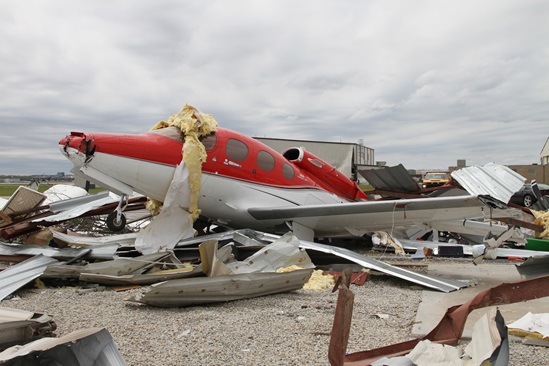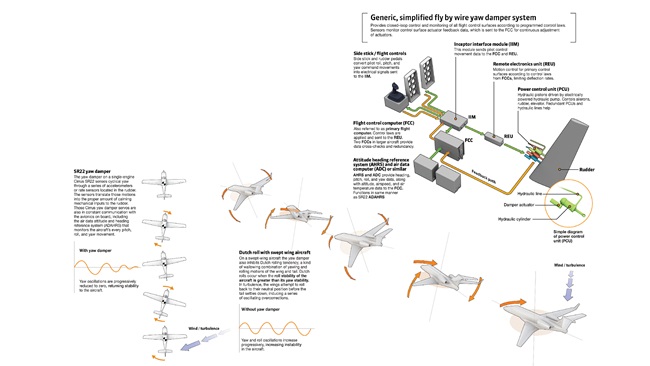Visibility's variables
600 and 2—says who?

After all, landing visibility minimums are regulatory in nature. For example, if an airport’s ceiling is below an IFR approach’s minimum descent altitude (MDA) or decision height/altitude (DH/DA), or the approach’s published visibility minimums the rule is simple: you can’t complete the approach. A missed approach procedure may be in the offing.
Unless, that is, you can make out the airport’s approach light system, threshold markings, runway lights, VASI, runway end identifier lights, or other markings. If you can have the red terminating or (when using ALSF-2 lighting arrays) red side row bars of approach lights in sight, you can continue your descent below 100 feet above the touchdown zone elevation. At that point, visibility permitting, you can either decide to land—or carry out a missed approach if you can’t make out the markings anymore. The theory here is that very low clouds may be thin enough that you can see through them from your vantage point in the pilot’s seat. Bottom line—your flight visibility can trump those of any official airport visibility reports.
For flying under VFR, cloud separation and visibility rules are classified according to airspace. For the regulatory language on IFR and VFR ceiling and visibility rules, see FAR 91.175 (IFR) or FAR 91.155 and 91.157 (VFR).
So far, we’ve touched on flight visibility. The Aeronautical Information Manual defines flight visibility as “the average forward horizontal distance from the cockpit of an aircraft in flight at which prominent unlighted objects may be seen and identified by day, and prominent lighted objects may be seen and identified at night.” That’s a pretty subjective standard, given that it relies on a pilot’s interpretation. How would a pilot really know how far away those objects are? You can use a multifunction display’s moving map, or the ones on ForeFlight/Garmin Pilot mobile apps, but it’s not like there is an official, dedicated method of determining range. So, we’re all official weather observers when it comes to determining whether we face VFR, special VFR, or IFR visibility and cloud clearance standards. The only one we can confidently measure (and comply with) is the “clear of clouds” mandate for SVFR and Class G operations. Slant visibility—the distance a pilot can see from the cockpit to the ground ahead—is more relevant when we’re on final approach in compromised visibility conditions. But it’s not mentioned in the FARs.
Ground visibility, another type of visibility measurement, is the horizontal visibility near the ground as reported by the National Weather Service or other accredited observers. For takeoffs and landings under SVFR in controlled airspace designated to the surface of an airport, the ground visibility must be at least one statute mile. But what if there’s no official report at the airport? In that case flight visibility applies, but with a twist. For SVFR purposes flight visibility’s definition is the visibility from the cockpit of an airplane on a runway, in takeoff position. Once again, the pilot’s judgment serves as the official source for visibility compliance. Take off or land with one-mile visibility? It may be legal with an ATC clearance, but certainly not a good idea for non-instrument-rated pilots.
Rather than trying to eyeball the visibility, most of us rely on the more objective, FAA-standardized information from METARs, TAFs, and other aviation weather products. These rely heavily on automated weather sensors, like the scatterometers on AWOS and ASOS stations. To determine visibility, the projector of a scatterometer sends a laser beam to its companion receiver, then measures how much the beam has diminished in strength, or attenuated, by water droplets or other particles. The projector and receiver are only 3.5 feet apart, so the volume of air between them is a very small sample of the visibility conditions around the entire airport. Even so, their reports verify fairly well, so they make their way into any AWOS, ASOS, ATIS, and METARs of the prevailing visibility at the time of detection. Another type of automated visibility is runway visual range (RVR). Like AWOS and ASOS equipment, RVR units project beams to companion receivers to measure visibility at critical points along the runway. The results are reports of the visibility down specified lengths of a runway. For landings out of instrument approaches in low instrument weather conditions, RVR can be important factors in making decisions to land. Vertical visibility—how far you can see up through an obscuration, like fog or smoke—is measured when an AWOS 3/4 (AWOS 1 and 2 don’t have ceilometers) or ASOS laser beam ceilometer can’t make out low cloud layers. Drizzle and fog can impair a clear signal to low clouds, so the AWOS 3/4 or ASOS reports a vertical visibility (VV) value instead.
Automation is great, but apart from its reliance on sampling small volumes of air there’s another drawback. How can you provide official visibility information if all those fancy sensors are broken or otherwise unavailable? That’s when trained, ground-based human weather observers come into the picture. These can be tower personnel, or other FAA-approved weather observers. At the heart of their work is a set of prominent nearby landmarks, each one at a known direction and distance from the observation site.
Observers use these landmarks to determine prevailing, variable prevailing, sector, and tower visibilities. Ever had a tour of a control tower? Then you may have noticed photos of the nearby landscape showing local buildings, signs, terrain features, and other notable features, at various distances from the tower. When the tower makes visibility observations, you’ll see the “tower vis” notation in a METAR. Tower visibility reports require that the airport also have the ability to report surface visibility.
When observations are made they need to follow guidelines set down in NOAA’s observer bible, Federal Meteorological Handbook No. 1, or FMH-1. For reporting prevailing visibility, observers determine the greatest distance that can be seen throughout at least half the horizon circle around them. Less specific is surface visibility, the prevailing visibility from the usual observation point. To report sector visibility, they’ll judge the visibility in a specified direction—say, northeast of the observation point—that represents at least a 45-degree arc of the horizon circle.
So “what’s the visibility?” It all depends on the source. But whether it’s from an automated weather station, a ground observer, tower observer, or a pilot, there’s always the chance of imprecision or debate. The good news is that many times the pilot has the final say. The only time a question may arise is if there’s a disagreement that bears on the outcome of an accident investigation or other enforcement action. All the more reason to exercise caution when flying instrument approaches and departures. 
Thomas A. Horne is a former longtime editor at large of AOPA Pilot.



